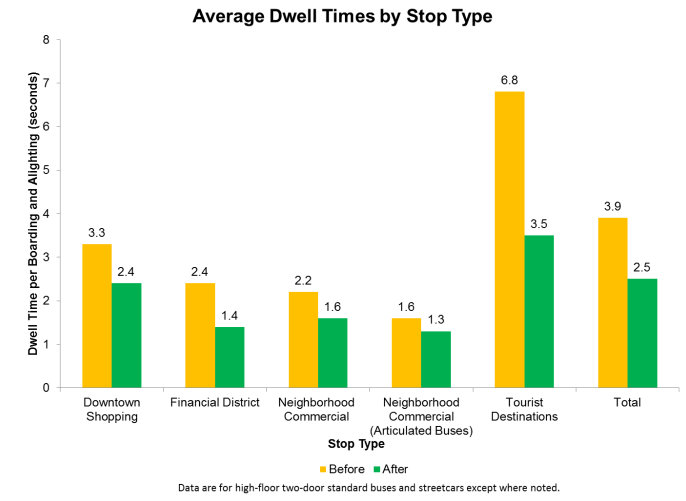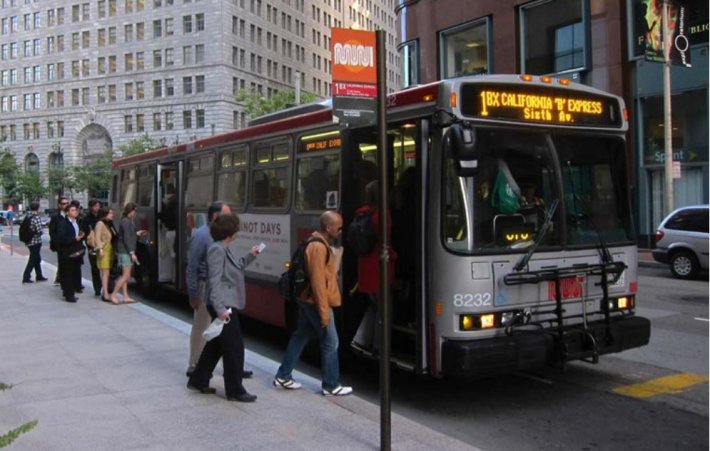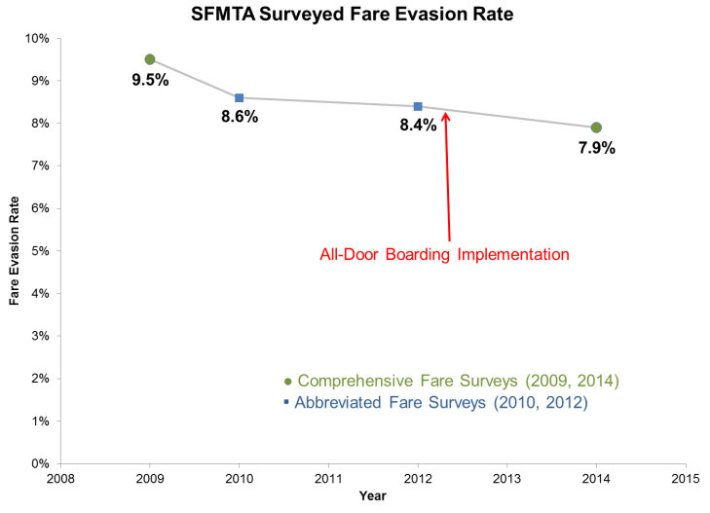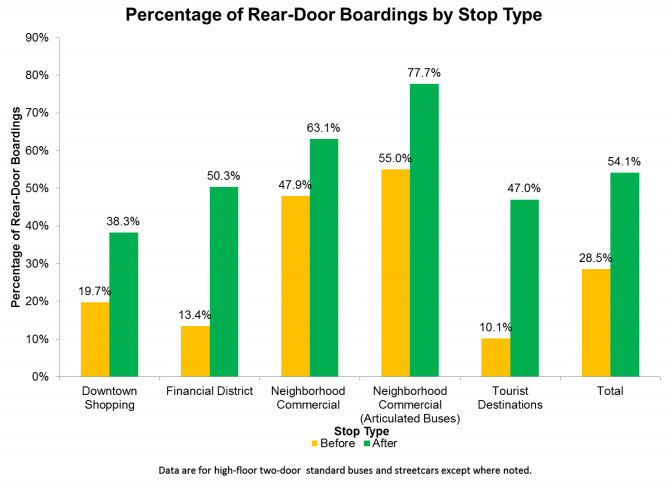
Two years after Muni launched all-door boarding, the agency continues to report [PDF] quicker boardings and lower rates of fare evasion.
As SFBay reported, SFMTA Performance Manager Jason Lee told the agency's board yesterday that "dwell times," the amount of time buses spend waiting at stops, have decreased by an average of 38 percent systemwide. Dwell times are also more consistent across the city, since the longest bus stops have seen the most improvement. Since 2011, average bus travel speeds have increased from 8.41 mph to 8.56 mph.
"That may not seem like a lot, but it adds up,” said Lee.
Fare evasion, meanwhile, dropped from 9.5 percent in 2009 to an estimated 7.9 percent in 2014, translating to an estimated $2.1 million in annual savings.
The results contradict predictions from critics who said all-door boarding would encourage fare evasion. Previously, bus operators had to verify and enforce payment at the front door. Now, buses use a "proof of payment" system, as had been the policy on light-rail lines for decades, where fare inspectors randomly check whether passengers have paid their fares. Inspection staff levels were boosted from 41 to 54 when all-door boarding launched.
Other factors beyond boarding policy could have influenced bus speeds and fare evasion. Christopher Grabarkiewctz, SFMTA's director of security, investigations and enforcement, noted that an improved economy could mean more riders have money to pay fares, and more riders are tagging Clipper cards rather than paying with time-consuming cash.
The flip side of the economic boom, Lee noted, is that rising employment and population also have increased ridership, and longer lines to board could obscure gains from all-door boarding. Lee said that across the board, riders are making better use of buses' rear doors.
SFMTA Board member Joél Ramos, who was one of the biggest advocates for launching all-door boarding, said the SFMTA needs to push forward with more street upgrades to give transit greater priority while moving on the streets. Such upgrades are underway for many routes as part of the Muni Forward program.
"The findings that [all-door boarding] hasn't increased the overall speed of the system very much is not so surprising," said Ramos, "in the sense that even if you have all-door boarding, you sit in traffic... without dedicated lanes to really speed transit along."







